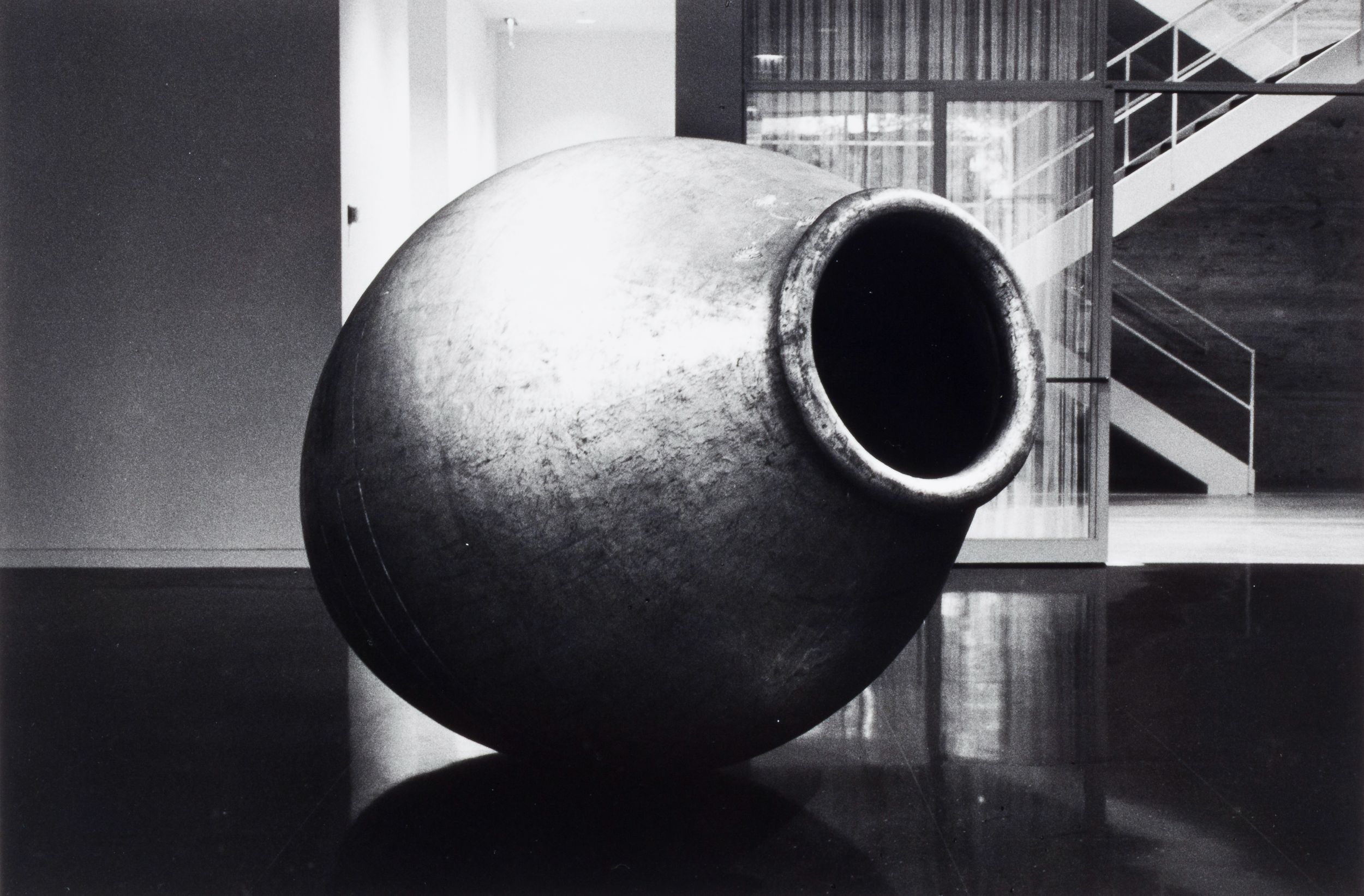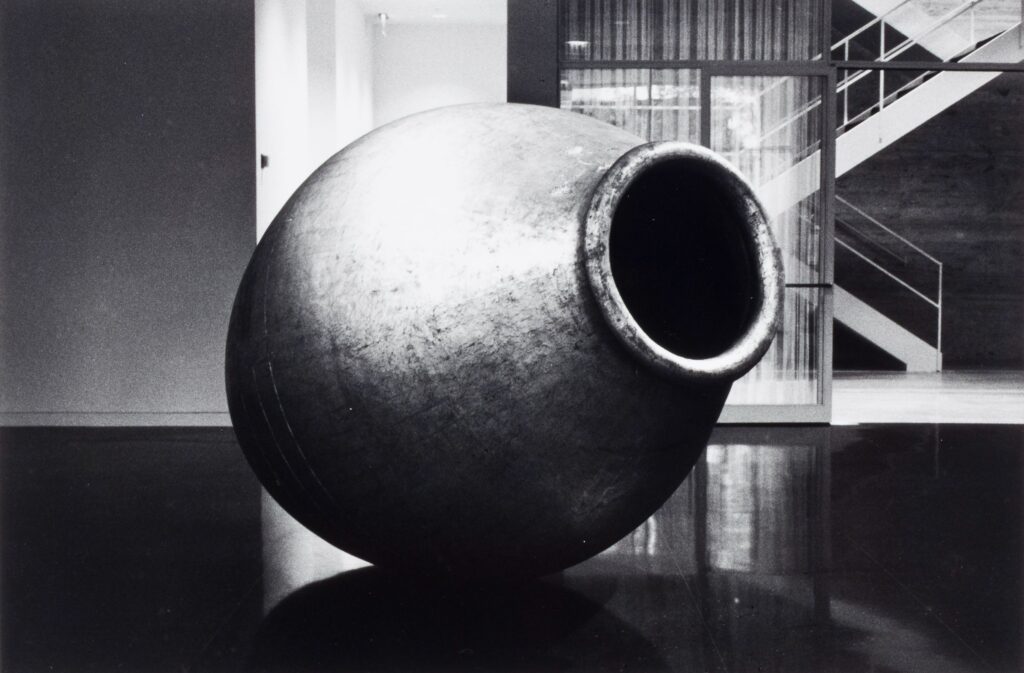James Lee Byars


Past exhibition
James Lee Byars
About the Exhibition
The Arts Club of Chicago will open the 1998-99 season with the first Chicago one person exhibition of the work of James Lee Byars on Thursday, September 17. Four major sculptural pieces The Spinning Oracle of Delphi, The Red Devil, The Red Tent and The Chair of Transformation along with several works on paper will be on view in the first floor galleries through November 21.
James Lee Byars was an enigmatic artist who used sculpture, performance and paper as vehicles to embody his pursuit of beauty and perfection. The experience of The Spinning Oracle of Delphi is both overwhelming in its scale, and by the fact that it is a gilded 19th century terra cotta amphora. Color is an intrinsic element of Byars’ work. Each color holds meaning: red, black and white represented purity and passion; gold eternity, death. Constructed of red silk, The Red Tent forms a theatrical, sculptural environment in which sits The Chair of Transformation, a 17th century Venetian gondola chair of hand tooled leather and wood. Composed of red satin cord, The Red Devil is installed on the floor in pentagon form. The work is one of Byars’ repeated investigations of the figure and “five points make a man.” All of these pieces are extreme in their simplicity, exorbitant in their material luxury, and manifest Byars’ continued desire to give the viewer a glimpse of perfection. Perfection is the abiding theme of Byars’ work—the perfect form, the correct materials and the essential purity of perception.
About the Artist
Detroit born, Byars spent many years in Japan where the culture influenced his aesthetic. He integrated aspects of Zen Buddhism and Noh drama into his work. He sought to capture the harmonious merger of all phenomena by producing a moment of enlightenment, which would for an instant, hold the viewer in suspension and give a glimpse of the ephemeral nature of pure beauty and perfection.
Choosing to position himself as an outsider, Byars flirted with all the major art movements of his time: the ritualism of Fluxus, the basic reductive figures of Minimalism, the ephemeral nature of Happenings and the spectacular nature of Pop Art. He contributed to all these movements, but remained at a distance. He exhibited and performed “actions” throughout the world with recent major exhibitions at Fundação de Seralves, Porto, Portugal and Instiuto València de Arte Moderno in València, Spain. His Monument to Language was included in the 1996 inaugural exhibition at the Museum of Contemporary Art in Chicago. He died in Cairo on May 23, 1997.